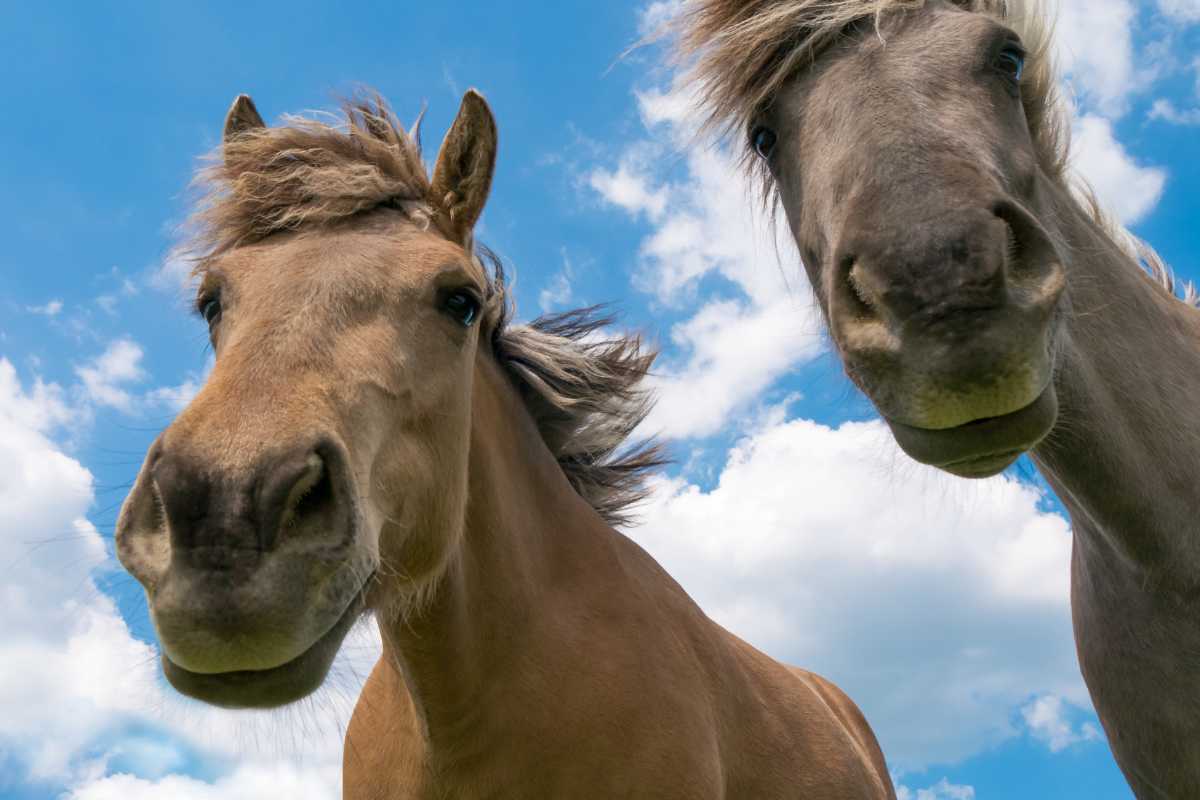- Urbaki Pets
- Horses
- Benefits of Yoga for Horses: Techniques for Relaxation and Flexibility
Benefits of Yoga for Horses: Techniques for Relaxation and Flexibility
20/09/2024 · Updated on: 27/10/2025

Horses don’t need yoga mats to feel better in their bodies. What they benefit from is calm handling, gentle stretches, and consistent routines that support relaxation, flexibility, and body awareness.
Below you’ll find a practical, safety-first guide you can use today—no special equipment, just patience and good timing.
What This Is (and Isn’t)

Think of this work as structured stretching and relaxation for horses, not a human yoga class translated one-to-one.
The goal is to reduce tension, improve comfortable range of motion, and help your horse move more freely.
We achieve this with slow, controlled positions, never forcing a posture or chasing dramatic results. If your horse resists, back off, breathe, and try a smaller ask.
When to Stretch for the Best Results
Soft tissues respond better when warm. Plan your session after 10–15 minutes of easy walking (in hand or under saddle) or at the end of a light workout.
Avoid deep stretching before intense work; keep any pre-ride mobility light and dynamic. A simple rule: warm first, stretch second.
Safety First: Non-Negotiables

Work on level, non-slippery footing in a quiet space.
Stand to the side of shoulders or ribcage, not directly in front or behind.
Use a halter and long lead; no tight ties during stretching.
Ask for small ranges first. Increase slowly only if the horse stays soft and balanced.
If you notice pain, lameness, heat, swelling, or recent injury, skip stretching and consult your vet.
In rehab or senior horses, follow a veterinary-approved plan. When in doubt, less is more.
Reading Your Horse: Green Lights and Red Flags
Green lights include a soft eye, quiet breathing, chewing/licking, a lowered neck, and easy weight shifts.
Red flags include pinned ears, tail swishing, muscle bracing, head jerks, stomping, pushing into you, hollowing the back, or avoiding the ask. At the first sign of tension, pause or stop.
The moment you honor the horse’s feedback, you build trust—and trust opens the door to better movement.
A Simple 5–10 Minute Starter Routine

Use this as an approachable template 2–4 times per week. Aim for 2–3 slow repetitions per side where applicable. Keep every repetition smooth, quiet, and brief—quality over quantity.
Carrot Stretches (Lateral & Sternal)
Purpose: Improve neck flexibility, encourage core engagement, and build body awareness.
How:
Stand by the shoulder. Hold a treat at nose height.
Invite a slow, controlled turn of the head toward the girth area (not to the hip at first).
The moment your horse softly reaches without twisting or losing balance, reward.
Repeat to the other side.
For a sternal reach, bring the treat to the chest midline to encourage a small chin-to-chest fold—no pulling, no forcing.
Tips: Keep the poll level. If the horse spirals or steps, make the reach smaller. The goal is soft precision, not a big bend.
Wither Lift (Thoracic Lift)
Purpose: Encourage postural engagement through the base of the neck and withers; help the horse lighten the forehand.
How:
Stand slightly to the side, facing the girth area.
With soft fingers, tickle/scratch along the midline behind the elbows, moving slowly until you find the spot that invites a gentle lift of the withers/back.
Reward as soon as you see a small lift or postural adjustment.
Tips: This should look subtle and relaxed—no jabbing. If there’s bracing, stop and reset.
Lumbosacral Lift (Pelvic Tilt/Postural Activation)

Purpose: Encourage a light pelvic tuck and core activation that supports the lumbar region.
How:
Stand safely to the side near the flank/rump, never directly behind.
Using the back of your knuckles or fingertips, apply a soft, gliding stimulus along the midline at the top of the croup and slightly forward.
Look for a tiny pelvic tuck or rounding through the back. Reward promptly.
Tips: If your horse clamps the tail, shifts suddenly, or braces, stop. Make sure your touch is light and exploratory.
Controlled Forelimb Extension (Front Leg Stretch)
Purpose: Support shoulder and pectoral mobility and reset minor tightness after work.
How:
Stand facing the horse’s shoulder, slightly to the side.
Gently pick up the forelimb as if cleaning the hoof.
Supporting the fetlock/cannon with both hands, guide the limb forward a few inches—no pulling.
Hold 1–2 seconds, then release and reward.
Tips: Keep it small and balanced. If the horse leans, you went too far.
Controlled Hindlimb Extension (Hind Leg Reach)
Purpose: Encourage hip and hamstring suppleness with maximum safety.
How:
From the side, ask for the hoof as if picking feet.
Cradle the limb and guide it slightly back to a tiny, comfortable reach.
Hold 1–2 seconds, release, and reward.
Tips: Never drag or force the limb. If your horse steps away or tightens, reduce the range immediately.
How Often and How Much?

Frequency: 2–4 sessions per week is plenty for most horses.
Reps: 2–3 slow reps per side (where relevant).
Duration: Short holds (1–2 seconds) at first; you can gradually lengthen if the horse stays relaxed.
Progression: Increase range and hold time only when movement remains soft and symmetrical.
Creating a Calm Headspace
Your energy sets the tone. Keep sessions quiet and predictable: same place, similar order, and soft hands. Pair stretching with scratches at favorite spots and small rewards to create positive associations.
Over time, many horses show you where they feel tight—leaning into certain scratches, turning to target the treat, or sighing when a spot releases. Listen to those hints.
Handling & Environment Checklist

Quiet area, minimal traffic, no loose dogs.
Lead rope in hand, not tied; quick release if the horse spooks.
Non-slip footing; avoid slick concrete.
Helper on hand for new horses or busy barns.
Body position awareness: always at the shoulder or barrel, never squarely in kicking or striking zones.
End on a good note—one nice repetition and lots of praise.
Common Questions (Quick Answers)
Can seniors benefit? Yes—gentle, tiny ranges can improve comfort and confidence. Always watch for arthritis flares and consult your vet for individual limits.
Before or after work? After light work (or after a 10–15 minute warmup) is ideal. Pre-ride work should be brief and easy.
What if my horse resists every ask? Scale it back. Try smaller ranges, shorter holds, and more rewards. Check saddle fit, feet, and body comfort; persistent resistance is your signal to consult a professional.
Building on the Basics

Once your horse is comfortable with these foundations, you can add gentle poll mobilizations, ribcage targets (lateral bend paired with stepping under), and in-hand walking patterns with serpentines and small circles to reinforce soft bend through movement.
Keep everything slow and thoughtful. If form deteriorates, regress to the last easy version.
Record and Reflect
A simple training journal helps you notice patterns: Which side is stiffer? Which stretch makes your horse sigh? Jot down dates, exercises, reactions, and any tack or farriery changes.
Small notes reveal big trends over weeks—exactly the insight you need to keep sessions effective and safe.
When to Call the Vet or Body Professional

New or worsening lameness
Heat, swelling, or pain to touch
Saddle sores or sharp behavioral changes
Post-injury or surgery (get a written plan)
Professionals can tailor therapeutic exercises, adjust ranges, and time your routine with farriery, dentistry, and saddle fitting to maximize comfort.
Keep It Soft: Small, Consistent Sessions Make the Difference
You don’t need dramatic poses to help your horse feel better. What works is quiet repetition, tiny improvements, and a relationship of trust.
Start with warm tissue, keep each ask easy and brief, and celebrate softness every time it shows up. With a few minutes, a few times a week, you’ll build a looser, happier, more confident partner—one soft stretch at a time.
Enjoy The Video About Horses

Source: Loomis Basin Equine Medical Group
Did you find this post useful or inspiring? Save THIS PIN to your Pets Board on Pinterest!

Urbaki Editorial Team is the collaborative byline behind our pet-care guides. Our writers and editors turn evidence and real-life experience into clear, humane advice on training, wellbeing, nutrition basics, and everyday life with animals. Every article is planned, written, and edited by humans, fact-checked against reputable veterinary sources, and updated over time. This is an editorial pen name—see our Editorial Policy. Educational only; not a substitute for veterinary advice.

You may also like